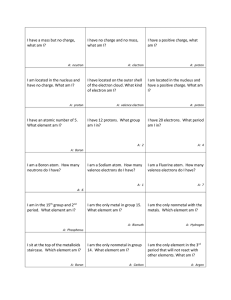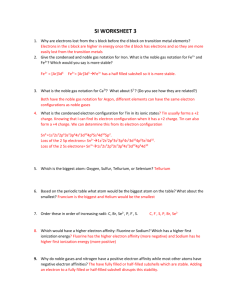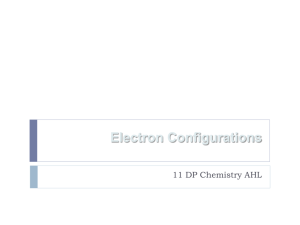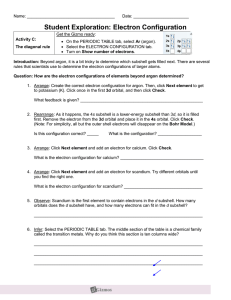Diff Chem Quiz
advertisement
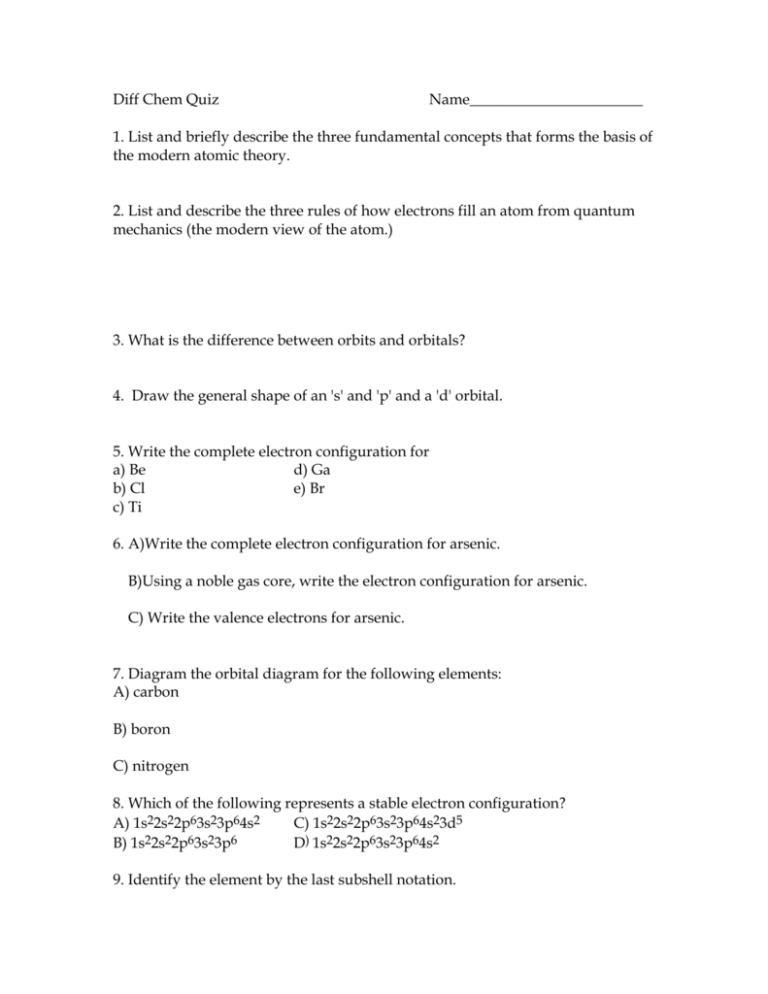
Diff Chem Quiz Name_______________________ 1. List and briefly describe the three fundamental concepts that forms the basis of the modern atomic theory. 2. List and describe the three rules of how electrons fill an atom from quantum mechanics (the modern view of the atom.) 3. What is the difference between orbits and orbitals? 4. Draw the general shape of an 's' and 'p' and a 'd' orbital. 5. Write the complete electron configuration for a) Be d) Ga b) Cl e) Br c) Ti 6. A)Write the complete electron configuration for arsenic. B)Using a noble gas core, write the electron configuration for arsenic. C) Write the valence electrons for arsenic. 7. Diagram the orbital diagram for the following elements: A) carbon B) boron C) nitrogen 8. Which of the following represents a stable electron configuration? A) 1s22s22p63s23p64s2 C) 1s22s22p63s23p64s23d5 B) 1s22s22p63s23p6 D) 1s22s22p63s23p64s2 9. Identify the element by the last subshell notation. A) 3p3 B) 4d1 C) 5p3 D) 4p5 E) 7s1 Atoms are neutrally charged having the same number of protons as electrons. Ions are charged. A fluroide ion F1- with its -1 charge has one more electron than it has protons. 10. How would you explain the charge of a Na1+ ion having a +1 charge. 11) Write the complete subshell notation for each of the following: A) F1B) Ne C) Na1+ 12. Using noble gas cores write the electron configuration for the following: A) Li _________B) Be __________ C) B_________ D) C___________ E) N__________F) O__________ G) F__________H) Ne__________ 13. Write the valence electron configuration for the following: A) F_________B) Cl__________C) Br___________D) I ______________ 14. Write electron configurations for elements from their atomic numbers. A) 15 B) 51 C) 9 D) 17 15. How many paired electrons are there in an atom of A) nitrogen B) sodium C) boron
